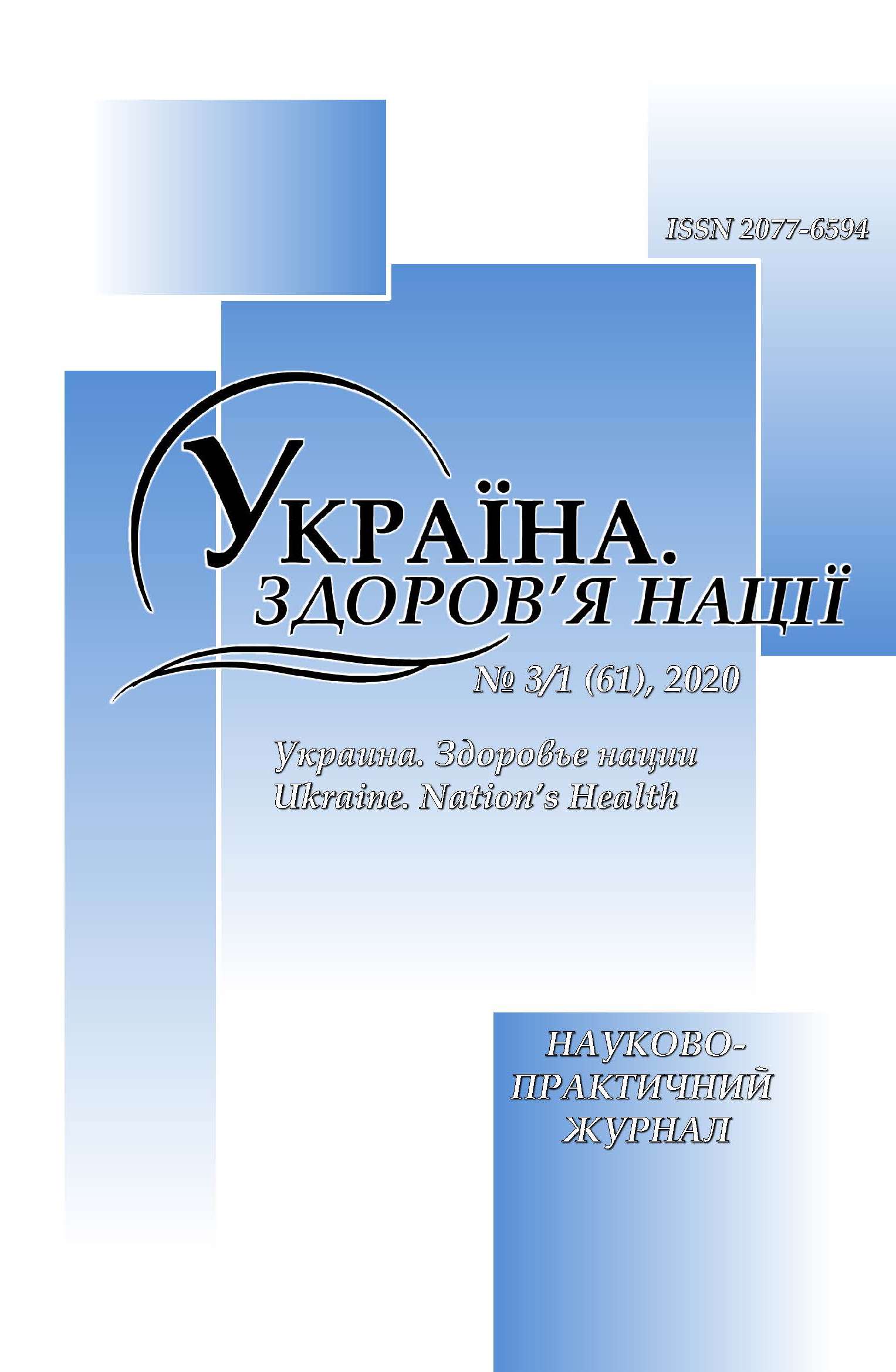Consequences of chronic wounds on patient’s lif
DOI:
https://doi.org/10.24144/2077-6594.3.2.2020.213711Анотація
Consequences of chronic wounds on patient´s lifeПосилання
Salomé, G.,M, et al. 2016. Influence of venous leg ulcers on body image and self-confidence. Adv Skin Care Wound Care. 2016; 29 (7): 316-21.
Popovičová, M. 2020. Novyje napravlenija po zaživleniju ran. Ukrajina. Zdorovja naciji, 3030, 3 (60): 120-124. ISSN 2077-6594.
Pospíšilová, A. 2013. Quality programs and standards of treatment procedures. Healing of chronic wounds. Online. Cited 8. november 2013, Available online: www.cslr.cz/download/hojeni-ran-standard.pdf.
Hlinková, E., Nemcová, J., Huľo, E. et al. 2019. Management of chronic wounds. Grada Publishing, a.s., 2019. Prague. 20 p. ISBN 978-80-271-2687-3.
Stryja, J.2008. Summary of wound healing. 1. ed. Semily: Geum s.r.o., 2008. 199 p. ISBN 9788086256603.
Zelenková, H. 2020. Amputations in diabetic foot syndrome – quo vadis? In: Belovičová, M., Makara, P.: Proceedings of scientific works: Days of practical obesitology and metabolic syndrome 16.-18.07.2020. Collegium Humanum, Wasaw Management University. 350 p. ISBN 978-83-958245-0-0.
Litchford, M.2019. Proactive approach to the prevention and treatment of chronic wounds. 2020. [online]. Available online : https://www.asaging.org/blog/proactive-approaches-help-prevent-and-treat-chronic-wounds-0.
Sen, C.,K, Gordillo, G.,M., Roy, S., et al. 2009. Human Skin Wounds. A Major and Snowballing Threat to Public Health and the Economy. Wound repair and regeneration : official publication of the Wound Healing Society [and] the European Tissue Repair Society. 2009;17(6):7.
Bowler, P., G., Duerden, B., I., Armstrong, D., G. 2001.Wound microbiology and associated approaches to wound management. Clin Microbiol Rev 14, 244-269.
Margolis, D. J.2012. Epidemiology of Wounds. In: Mani R. et al. (eds.), Measurements in Wound Healing, Springer-Verlag London 2012.
Fábryová, Ľ., Holéczy, P. et al.: Diabezita. Diabetes and obesity – inseparable twins. Brno: Facta Medica, 2019: 336 p. ISBN 978-80-88056-09-6.
NCZI. 2018. Activities of diabetological clinics in the Slovak Republic. Bratislava 2018. [online]. Available online: http://data.nczisk.sk/statisticke_vystupy/Diabetologia/Cinnost_diabetologickych_ambulancii_v_ SR_2017.pdf.
Gašpar, Ľ., Ambrózy, E., Mesárošová, D., Ludék, V., 2020. Amputations in diabetic foot syndrome – quo vadis? In: Belovičová, M., Makara, P.: Proceedings of scientific works: Days of practical obesitology and metabolic syndrome 16-18.07.2020. Collegium Humanum, Wasaw Management University. 350 p. ISBN 978-83-958245-0-0.
Mani, R., Romaneli, M., Shukla, V.,2013. Measurements in Wound Healing, Science and Practice, Springer, 2013, ISBN 978-1-4471-2987-5.
Newbern, S. 2018. Identification of pain and effects on quality of life from chronic wounds to secondary vascular disease with lower extremity: An integrated review. Adv Skin Care Wound Care. 2018; 31 (3): 102-8.
Cavassan, N.,R.,V. et al. 2018. Correlation between chronic venous ulcer exudate proteins and clinical profile: A cross-sectional study. J Proteomics. 2018; 192: 280-90.
Franks, P.,J., Moffatt, CH.,J. 2013. Quality of life issues in the treatment of chronic wounds. British Journal of Community Nursing VOL. 4, NO. 6 Published online: September 27, 2013. [online]. Available online : https://doi.org/ 10.12968/bjcn.1999.4.6.7476.
Ebbeskog, B., Ekman, S. 2001. Elderly people’s experiences: the meaning of living with venous leg ulcer. European Wound Management Association Journal. 2001, 1 (1): 21-23 Franks, et al: Community leg ulcers. Phlebology 83–86, 1994.
Douglas. V. 2001. Living with a chronic leg ulcer: an insight into patients’ experiences and feelings. Journal of Wound Care, 2001, 10(9): 355–60.
Hareendran, A.et al.2005. The impact of venous leg ulcers on quality of life. Journal of Wound Care, 2005, 14(2): 53–7.
Green, J., Jester, R. 2010. Health-related quality of life and chronic venous leg ulceration: part 2. Wound Care, March 2010.
Rich, A., McLachlan, L. 2003. How living with a leg ulcer affects people’s daily life: a nurse-led study. Journal of Wound Care. 2003, 12(2): 51–54.
Chase, S. et al. 2000. Living with chronic venous leg ulcers: a
descriptive study of knowledge and functional status. Journal of Community Health Nursing, 2000, 17(1): 1–13.
Hopkins, A. 2004. Disrupted lives: investigating coping strategies for nonhealing leg ulcers. British Journal of Nursing. 2004, 13(9): 556–63.
Mokán, M. et al. 2008. Prevalence of diabetes mellitus and metabolic syndrome in Slovakia. Diabetes Res Clin Pract. 2008 Aug;81(2):238–42.
Posnett, J., Franks, P., J. 2008. The burden of chronic wounds in
the UK. Nursing Times, 2008, 104:3, 44–45. [online]. Available online: https://www.nursingtimes.net/clinical-archive/tissue-viability/the-burden-of-chronic-wounds-in-the-uk-23-01-2008.
Palfreyman, S. 2008. : Assessing the impact of venous ulceration on quality of life. Nursing Times, 2008, 104(41): 34–37.
Järbrink, K. et al.2016. Prevalence and incidence of chronic wounds and advertising Related complications: protocol for systematic review 2016; 5 (1): 152. Published online September 8, 2016 doi: 10,1886/s13643-016-0329-y. PMCID: PMC5017042.
##submission.downloads##
Номер
Розділ
Ліцензія
Автори, які публікуються у цьому журналі, погоджуються з наступними умовами:
1. Автори залишають за собою право на авторство своєї роботи та передають журналу право першої публікації цієї роботи на умовах ліцензії Creative Commons Attribution License, котра дозволяє іншим особам вільно розповсюджувати опубліковану роботу з обов'язковим посиланням на авторів оригінальної роботи та першу публікацію роботи у цьому журналі.
2. Автори мають право укладати самостійні додаткові угоди щодо неексклюзивного розповсюдження роботи у тому вигляді, в якому вона була опублікована цим журналом (наприклад, розміщувати роботу в електронному сховищі установи або публікувати у складі монографії), за умови збереження посилання на першу публікацію роботи у цьому журналі.
3. Політика журналу дозволяє і заохочує розміщення авторами в мережі Інтернет (наприклад, у сховищах установ або на особистих веб-сайтах) рукопису роботи, як до подання цього рукопису до редакції, так і під час його редакційного опрацювання, оскільки це сприяє виникненню продуктивної наукової дискусії та позитивно позначається на оперативності та динаміці цитування опублікованої роботи (див. The Effect of Open Access).

